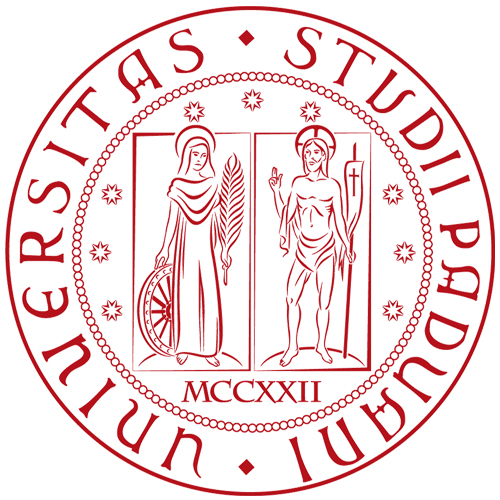biblio_xml
Bibliography
A
= P. Aupert, "Inscriptions d'Amathonte II, BCH 104 (1980), p. 237-258.
= C. Austin, G. Bastianini (eds), Posidippi Pellaei quae supersunt omnia, Milan 2002.
= P. Amandry et al., "Collection de l'École française d'Athènes", BCH 96 (1972), p. 5-115.
= A. Anastassiades, "Ἀρσινόης Φιλαδέλφου. Aspects of a Specific Cult in Cyprus", RDCA (1998), p. 129-140.
= M. Austin, The Hellenistic World from Alexander to the Roman Conquest. A Selection of Ancient Sources in Translation, Cambridge 2006 (2nd ed.).
B
= R.S. Bagnall, P. Derow (eds), The Hellenistic Period. Historical Sources in Translation, Malden MA-Oxford-Victoria 2004.
= S. Barbantani, "Arsinoe II Filadelfo nell'interpretazione storiografica moderna, nel culto e negli epigrammi del P.Mil.Vogl. VIII 309", in L. Castagna, C. Riboldi (eds), Amicitiae templa serena. Studi in onore di Giuseppe Aricò, Milan 2008, p. 103-134.
= A. Bencivenni, Progetti di riforme costituzionali nelle epigrafi greche dei secoli IV-II a.C., Bologna 2003.
= A. Bencivenni, "Come accettare regalmente un culto", Simblos 6 (2015), p 95-110.
= R.A. Billows, Antigonos the One-Eyed and the Creation of the Hellenistic State, Berkeley-Los Angeles 1990.
= L. Boffo, I re ellenistici e i centri religiosi dell'Asia Minore, Pavia 1985.
= O. Bounegru, "Arsinoe", in Lexicon of the Greek and Roman Cities and Place Names in Antiquity, ca. 1500 BC - ca. AD 500, Amsterdam 2002, VI, p. 947-957.
= L. Bricault, "Sarapis et Isis, Sauveurs de Ptolémée IV à Raphia, CdÉ 74 (1999), p. 334-343.
= L. Bricault, Isis dame des flots (Aegyptiaca Leodiensia 7), Liège 2006.
= L. Bricault, Les cultes isiaques dans le monde gréco-romain, Paris 2013.
= L. Bricault, "Une dédicace-double d'Ephèse pour Ptolémée, Arsinoé, Sarapis et Isis", in L. Bricault, R. Veymiers (eds), Bibliotheca Isiaca III, Bordeaux 2014, p. 7-10.
= K. Bringmann, H. von Steuben, Schenkungen hellenistischer Herrscher an griechische Städte und Heiligtümer, Berlin 1995.
= D. Burr Thompson, Ptolemaic Oinochoai and Portraits in Fayence: Aspects of the Ruler Cult, Oxford 1973.
C
= A. Calapà, "Due dediche a sovrani tolemaici da Efeso e l'espansione tolemaica in Ionia negli anni settanta del III sec. a.C.", Studi Ellenistici 24 (2010), p. 197-210.
= S.G. Caneva, "Arsinoe divinizzata al fianco del re vivente Tolemeo II. Uno studio di propaganda greco-egiziana (270-246 a.C.)", Historia 62.3 (2013), p. 280-322.
= S.G. Caneva, "Ruler Cults in Practice: Sacrifices and Libations for Arsinoe Philadelphos, from Alexandria and Beyond", in T. Gnoli, F. Muccioli (eds), Divinizzazione, culto del sovrano e apoteosi. Tra Antichità e Medioevo (Bononia University Press 1), Bologna 2014, p. 85-116.
= S.G. Caneva, "Courtly Love, Stars, and Power: The Queens in Third-Century Royal Couples, through Poetry and Epigraphic Texts", in A. Harder, R. Regtuit, G.C. Wakker (eds), Hellenistic Poetry in Context (Hellenistica Groningana 17), Leuven 2014, p. 25-57.
= S.G. Caneva, "Costruire una dea. Arsinoe II attraverso le sue denominazioni divine", Athenaeum 103.1 (2015), p. 95-122.
= S.G. Caneva, From Alexander to the Theoi Adelphoi: Foundation and Legitimation of a Dynasty (Studia Hellenistica 56), Leuven 2016.
= S.G. Caneva, "Short Notes on 3rd-Century Ptolemaic Royal Formulae and Festivals", ZPE 200 (2016), p. 207-214.
= S.G. Caneva, "Ritual Intercession in the Ptolemaic Kingdom: A Survey of Grammar, Semantics and Agency", Erga-Logoi 4.2 (2016), p. 117-154.
= S.G. Caneva, "Ptolemy I: Politics, Religion and the Transition to Hellenistic Egypt", in T. Howe (ed.) Ptolemy I Soter: A Self-made Man, London 2018, p. 88-127.
= S.G. Caneva, "L’importance de la matérialité. Le rôle des petits autels, plaques et bases inscrits dans la compréhension des cultes pour les souverains", in S.G. Caneva (ed.) The Materiality of Hellenistic Ruelr Cults (Kernos Suppl.), Liège, forthcoming.
= S.G. Caneva, L. Bricault, "Sarapis, Isis et la continuité dynastique lagide. À propos de deux dédicaces ptolémaïques d’Halicarnasse et de Kaunos", Chiron 49 (2019).
= L. Capdetrey, Le pouvoir séleucide. Territoire, administration, finances d’un royaume hellénistique (312-129 avant J.-C.), Rennes 2007.
= H. Catling, “Unpublished Finds from Cyprus”, RDAC (1988), p. 325-330.
= J.-M. Carbon, S. Peels, V. Pirenne-Delforge (eds), Collection of Greek Ritual Norms, Liège 2016-.
= A. Chaniotis, “Ein diplomatischer Statthalter nimmt Rücksicht auf den Verletzen Stolz zweier hellenistischen Kleinpoleis (Nagidos und Arsinoe)", EA 21 (1993), p. 33-42.
= A. Chaniotis, Die Verträge zwischen kretischen Poleis in der hellenistischen Zeit, Stuttgart 1996.
= L. Criscuolo, "Il dieceta Apollonio e Arsinoe", in H. Melaerts (ed.), Le culte du souverain dans l'Égypte ptolémaïque au IIIe siècle avant notre ère, Leuven 1998, p. 61-72.
= G.M. Cohen, The Hellenistic Settlements in Europe, the Islands, and Asia Minor, Berkeley-Los Angeles-Oxford 1995.
= J.M. Cook, The Troad: An Archaeological and Topographical Study, Oxford 1973.
D
= M. D'Agostini, "Asia Minor and the Many Shades of a Civil War: Observations on Achaios the Younger and His Claim on the Kingdom of Anatolia", in K. Erickson (ed.), The Seleukid Empire, 281-222: War Within the Family, Swansea 2018, p. 59-81.
= F. Dunand, Le culte d'Isis dans le Bassin Oriental de la Méditerranée (EPRO 26.1-3), Paris 1973.
E
= Y. El-Masry, H. Altenmüller, H.J. Thissen (eds), Das Synodaldekret von Alexandria aus dem Jahre 243 v. Chr. (Studien zur Altägyptischen Kultur 11), Hamburg 2012.
F
= E. Fassa, "Sarapis, Isis, and the Ptolemies in Private Dedications: the Hyper-style and the Double Dedications", Kernos 28 (2015), p. 133-153.
= Ch. Fischer-Bovet, Army and Society in Ptolemaic Egypt, Cambridge 2014.
= A. Fulińska, “Divae Potentes Cypri? Remarks on the Cult of the Ptolemaic Queens as Aphrodite”, Eos 99 (2012), p. 47-73.
G
= Ph. Gauthier, Nouvelles inscriptions de Sardes II (Hautes Etudes du monde gréco-romain 15), Paris 1989.
= D. Gera, "Ptolemy Son of Thraseas and the Fifth Syrian War", Ancient Society 18 (1987), p. 63–73.
= M.E. Gorrini, "Familiengruppen con Arsinoe III", Quaderni Ticinesi 37 (2008), p. 163-190.
= G. Grimm, Alexandria. Die erste Königsstadt der hellenistischen Welt. Bilder aus der Nilmetropole von Alexander dem Großen bis Kleopatra 7., Mainz 1998.
H
= Ch. Habicht, Divine Honors for Mortal Men in Greek Cities: The Early Cases (Translated from the German by John Noël Dillon), Ann Arbor 2017 (1st ed. 1956; 2nd. ed. 1970).
= G.M.A. Hanfmann (ed.), Sardis from Prehistoric to Roman Times: Results of the Archaeological Exploration of Sardis, 1958-1975, Cambridge MA 1983.
= H. Hauben, "Callicrates of Samos and Patroclus of Macedon, Champions of Ptolemaic Thalassocracy", in K. Buraselis, M. Stefanou, D.J. Thompson (eds), The Ptolemies, the Sea and the Nile: Studies in Waterborne Power, Cambridge 2013, 39-65.
= H. Heinen, "Der κτίστης und die Einrichtung einer neuen Stadt. Teil II", APF 43 (1997), p. 340-363.
J. Heinrichs, "Antiochos III and Ptolemy, Son of Thraseas, on Private Villages in Syria Koile around 200 BC: the Hefzibah Dossier", ZPE 206 (2018), 272-311.
= W. Held, Ch. Winkeling-Aumann, "Der ‘Korinthische Tempel' in Kaunos. Vorläufige Ergebnisse der Untersuchungen im August 2013", in A. Diler et al. (eds), Basileus. 50. yılında Kaunos/kbid - 50th Anniversary of Caunus / kbid (Arkeolojik Araştırmalar Suppl. 1), Ankara 2017, p. 210–230.
= F. Hiller von Gaertringen, Thera: Untersuchungen, Vermessungen und Ausgrabungen in den Jahren 1895 - 1902 (Band 1): Die Insel Thera in Altertum und Gegenwart: mit Ausschluß der Nekropolen, Berlin 1899.
= F. Hiller von Gaertringen, Thera: Untersuchungen, Vermessungen und Ausgrabungen in den Jahren 1895 - 1902 (Band 3): Stadtgeschichte von Thera, Berlin 1904.
= M. Hollaux, Études d'épigraphie et d'histoire grecque III, Paris 1942.
= W Huss, Untersuchungen zur Aussenpolitik Ptolemaios’ 4., Munich 1976.
= W Huss, Ägypten in hellenistischer zeit: 332-30 v.Chr., Munich 2001.
I
= M. Guarducci (ed), Inscriptiones Creticae, opera et consilio Friderici Halbherr collectae; curavit Margarita Guarducci, Voll. 1-4, Roma 1935-1950.
= F. Hiller von Gaertringen, Inscriptiones Graecae. XII. Inscriptiones insularum maris Aegaei praeter Delum. F. 3. Inscriptiones Symes Teutlussae Teli Nisyri Astypalaeae Anaphes Therae et Therasiae Pholegandri Meli Cimoli, Berlin 1898.
= F. Hiller von Gaertringen, Inscriptiones Graecae. XII. Inscriptiones insularum maris Aegaei praeter Delum. F. 5. Inscriptiones Cycladum (II Vols), Berlin 1903-1909.
= W. Blümel, Die Inschriften von Iasos, Bonn 1985.
= Ch. Marek, Die Inschriften von Kaunos (Vestigia 55), Munich 2006.
= T.B. Mitford, The Inscriptions of Kourion, Philadelphia 1971.
= T.B. Mitford, "The Hellenistic Inscriptions of Old Paphos", ABSA 56 (1961), 1-41.
= J.-B. Cayla, Les inscriptions de Paphos. La cité chypriote sous la domination lagide et à l'époque impériale, Lyon 2018.
= P.P. Iossif, "La dimension publique des dédicaces 'privées' du culte royal ptolémaïque", in V. Dasen, M. Piérart (eds), Ίδια και δημοσία. Les cadres 'privés' et 'publics' de la religion grecque antique (Kernos Suppl. 15), Liège 2005, p. 235-257.
J
= Ch.J. Jones, Ch. Habicht, "A Hellenistic Inscription from Arsinoe in Cilicia", Phoenix 43 (1989), p. 317-346.
K
= A. Karetsou, M. Andreadaki-Vlazaki, N. Papadakis (eds), Crete - Egypt: Three Thousands Years of Cultural Links, Herakleion-Cairo 2001.
= E. Kart, "Anadolu’da İsis ve Sarapis Kültünün Kaunos’taki İzleri", in Uluslararasi genç bilimciler Buluşması, 1. Anadolu akdenizi, sempozyumu 4-7 kasim 2009, Antalya. Sempozyum bildirileri. International Young Scholars Conference, 1. Mediterranean Anatolia, 4-7 November 2009, Antalya. Symposium proceedings, Antalya 2012, p. 195-204
= D. Knoepfler, "Le temple du Métrôon de Sardes et ses inscriptions", Museum Helveticum 50 (1993), p. 26-43.
= H. Kotsidu, Time kai doxa. Ehrungen für hellenistische Herrscher im griechischen Mutterland und in Kleinasien unter besonderer Berücksichtigung der archäologischen Denkmäler, Berlin 2000.
= F. Krinzinger (ed.), Das Hanghaus 2 von Ephesos: Studien zu Baugeschichte und Chronologie (Archäologische Forschungen 7), Vienna 2002.
= Y. Kuzmin, "The Antigonids, Caunus and the so-called ‘Era of Monophthalmus’: Some Observations Prompted by a New Inscription", in V. Goušchin, P.J. Rhodes (eds) Deformations and Crises of Ancient Civil Communities, Stuttgart 2015, p. 73-85.
L
= E. Lanciers, "Die Vergöttlichung und die Ehe des Ptolemaios IV. und der Arsinoe III.", APF 34 (1988), p. 27-32.
= Th. Landvatter, "The Serapis and Isis Coinage of Ptolemy IV", AJN 24 (2012), p. 61-90.
M
= J. Ma, Antiochos III and the Cities of Western Asia Minor, Oxford 2002 (2nd ed.).
= A. Magnetto, Gli arbitrati interstatali greci. II: dal 337 al 196 a.C., Pisa 1997.
= O. Masson, Les inscriptions chypriotes syllabiques. Recueil critique et commenté, Paris 1961.
= O. Masson, "Inscriptions chypriotes retrouvées ou disparues", Syria 48 (1971), p. 427-452.
= A. Meadows, "Two 'Double' Dedications at Ephesus and the Beginning of Ptolemaic Control of Ionia", Gephyra 10 (2013), p. 1-12.
= Ch. Michel, "Le décret de Scepsis en réponse è une lettre d'Antigone I", REG 32 (1919), p. 388-392.
= T.B. Mitford, "Further Contributions to the Epigraphy of Cyprus", AJA 65.2 (1961), p. 93-151.
= J. Mlyniarczyk, Nea Paphos III: Nea Paphos in the Hellenistic Period, Varsovie 1990.
= J.A.R. Munro, "A Letter from Antigonus to Scepsis, 311 B. C.", JHS 19 (1899), p. 330-340.
= K. Müller, Settlements of the Ptolemies: City Foundations and New Settlements in the Hellenistic World (Studia Hellenistica 43), Leuven 2006.
= J. Myres, A Handbook of the Cesnola Collection, New York 1914.
N
= M. Nafissi, "L'iscrizione di Laodice (IvIasos 4). Revisione del testo e nuove osservazioni", Parola del Passato LVI 1-2 (2001), p. 101-146.
= I. Nicolaou, "Inscriptiones Cypriae Alphabeticae XXXII, 1992", RDCA (1993), p. 223-264.
O
= W. Dittenberger, Orientis Graeci Inscriptiones Selectae. Supplementum Sylloges inscriptionum graecarum, Leipzig 1903-1905.
= I. Opelt, E. Kirsten, "Eine Urkunde der Gründung von Arsinoe in Kilikien, ZPE 77 (1989), p. 55-66.
P
= L. Palma di Cesnola, A descriptive Atlas of the Cesnola Collection of Cypriote Antiquities in the Metropolitan Museum of Art, New York 1903, Vol. III.
= P. Paschidis, Between City and King: Prosopographical Studies on the Intermediaries between the Cities of the Greek Mainland and the Aegean and the Royal Courts in the Hellenistic Period (322-190 BC) (MΕΛΕΤHΜΑΤΑ 59), Athens 2008.
= I.K. Peristianis, Γενική ιστορία της νήσου Κύπρου: από των αρχαιοτάτων χρόνων μέχρι της αγγλικής κατοχής, Nicosia 1910.
= G. Petzl, "Das Inschriftendossier zur Neugründung von Arsinoë in Kilikien: Textkorrekturen, ZPE 139 (2002), p. 83-88.
= S. Pfeiffer, Griechische und lateinische Inschriften zum Ptolemäerreich und zur römischen Provinz Aegyptus, Berlin 2015.
= F. Piejko, "Antiochus III and Ptolemy Son of Thraseas: The Inscription of Hefzibah Reconsidered",
Ant.Cl. 40 (1991), p. 245-259.
= W. Peremans, E. Van't Dack, L. Mooren, W. Swinnen (eds), Prosopographia Ptolemaica, VI : La cour, les relations internationales et les possessions extérieures, la vie culturelle (Studia Hellenistica 17), Leuven 1968.
Q
R
= G.A. Radet, "Sur quelques points de l'histoire des Séleucides", Revue de Philologie 17 (1893), p. 57-62.
= G.A. Radet, P. Paris, "Inscription relative à Ptolémée fils de Thraséas", BCH 14 (1890), p. 587-589.
= C.B. Welles, Royal correspondence in the Hellenistic period: A study in Greek epigraphy, New Haven 1934.
= S. Reinach, Chronique d'Orient. Fouilles et découvertes à Chypre depuis l'occupation anglaise, Paris 1886.
= G.H. Renberg, Where dreams may come: Incubation Sanctuaries in the Greco-Roman World, Leiden-Boston 2016.
= J.-P. Rey-Coquais, "Inscriptions et toponymes hellénistiques de Phénicie", Studi Ellenistici XIX (2006), p. 109-117.
= L. Bricault (ed.), Recueil des inscriptions concernant les cultes isiaques, Paris 2005.
= L. Bricault (ed.), Supplément no. 2 au RICIS, in L. Bricault, R. Veymiers (eds), Bibliotheca Isiaca II, Bordeaux 2011.
= J. Rowlandson, "The Character of Ptolemaic Aristocracy. Problems of Definition and Evidence", in T.Rajak, S.Pearce,J.Aitken, J. Dines (eds.),Jewish Perspectives on Hellenistic Rulers, Berkeley-Los Angeles 2007, p. 29-49.
S
= M. Sabottka, Das Serapeum in Alexandria: Untersuchungen zur Architektur und Baugeschichte des Heiligtums von der frühen ptolemäischen Zeit bis zur Zerstörung 391 n. Chr (Etudes alexandrines 15), Cairo 2008.
= I. Savalli-Lestrade, "Amici del re, alti funzionari e gestione del potere principalmente nell'Asia Minore ellenistica", Symblos 3 (2001), p. 263-294.
= Supplementum Epigraphicum Graecum, Leiden.
= S. Settis, "Descrizione di un ninfeo ellenistico", SCO 14 (1965), p. 247-257.
= H. Lloyd-Jones, P. Parsons (eds), Supplementum Hellenisticum, Berlin 1983.
= W. Dittenberger, F. Hiller von Gaertringen, J. Kirchner, H.R. Pomtow, E. Ziebarth (eds), Sylloge Inscriptionum Graecarum, 4 Vols. (3ed edition), Leipzig 1915-1924.
= L. Vidman, Sylloge inscriptionum religionis Isiacae et Sarapiacae, Berlin 1969.
= M.L. Strack, Die Dynastie der Ptolemäer, Berlin 1897.
T
= L. Thély, "Inscriptions d’Amathonte XI. Un autel en l’honneur de Ptolémée X et Bérénice III découvert aux abords Sud-Ouest de l’agora ", BCH (2015/16), p. 464-484.
U
= A. Ulbrich, Kypris: Heiligtümer und Kulte weiblicher Gottheiten auf Zypern in der kyproarchaischen und kyproklassischen Epoche (Königszeit) (Alter Orient und Altes Testament 44), Münster 2008.
V
= B. Virgilio, Lancia, diadema e porpora. Il re e la regalità ellenistica (Studi Ellenistici 14), Pisa 2003.
= D. Viviers, "Une cité crétoise à l’épreuve d’une garnison lagide: l’exemple d’Itanos", in J.-Ch. Couvenhes, S. Crouzet, S. Péré-Noguès (eds), Pratiques et identités culturelles des armées hellénistiques du monde méditerranéen (Hellenistic Warfare 3), Bordeaux 2011, p. 35-64.
W
= Sh. Wallace, The Freedom of the Greeks in the Early Hellenistic Period (337-262 BC): A Study in Ruler-City Relations, PhD Dissertation, University of Edinburgh 2011.
= C. Witschel, "Beobachtungen zur Stadtentwicklung von Thera in hellenistischer und römischer Zeit", in W. Hoepfner (ed), Das dorische Thera V: Stadtgeschichte und Kultstätten am Noördlichen Stadtrand, Berlin 1997, p. 17-46.
= M. Wörrle, "Die ptolemäische Garnison auf der Burg von Limyra im Licht einer neuen Inschrift", in B. Beck-Brandt, Sabine Ladstätter, B. Yener-Marksteiner (eds), Turm und Tor. Siedlungsstrukturen in Lykien und benachbarten Kulturlandschaften, Vienna 2015, p. 291-303.
X
Y
Z




